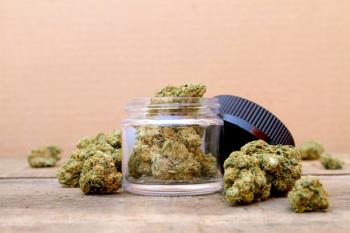
Cannabis Science and Technology
- March 2023
- Volume 6
- Issue 2
- Pages: 26-29
Cannabis Extraction Facility Setup 101
This tutorial article outlines the key considerations that must be put in place when setting up a cannabis extraction facility.
The cannabis industry has experienced significant growth momentum in the last decade as several states and countries outside the US have legalized cannabis for medical and recreational use. Alongside it, the nature of the products in the market has diversified and consumers now have a wide spectrum of products to choose from. This has prompted a shift from flower, which has been the mainstay of the unregulated market, towards more sophisticated products created from extracts. Given the high value of cannabis extraction as a niche, starting a cannabis extraction facility can be a potentially lucrative venture. However, the regulatory environment around cannabis is rather nuanced, with fluid laws that change from one state to another. This tutorial article outlines the key considerations that must be put in place when setting up a cannabis extraction facility.
The cannabis extracts market size has grown in leaps and bounds in the last couple of years. From a current estimated value of about $2.7 billion, the value of the global extract market size will probably hit $3.5 billion by 2030 if the Compound Annual Growth Rate (CAGR) of about 20.6% is maintained during the period (1).
Cannabis extraction is an integral part of the cannabis value chain. Once cannabis has been cultivated and harvested, the phytochemicals are then extracted and used to create different products. Extraction laboratories can either exist independently or they can be a part of a vertically integrated cannabis operation.
Cannabis extraction is one of the ways through which laboratories can venture into the cannabis industry. Setting up an extraction laboratory for business requires a huge investment in terms of time, resources, and expertise (2). The extraction of cannabinoids and terpenes from cannabis is a fine balance between science and art, calling for high precision in the scientific technique while at the same time, employing the finest art in curating a high-quality extract. In addition, there are rules and regulations that cannabis extraction laboratories must comply with. Cannabis is classified under Schedule I of the Controlled Substances Act (CSA), technically implying that it has a high risk of abuse and has no known medical use in the US (3). This also means that cannabis is an illegal compound under federal law, even though more than two thirds of the states have legalized medical cannabis. Cannabis is thus a highly regulated industry and so is cannabis extraction.
When setting up a cannabis extraction facility, several factors must be taken into consideration. Like any other business, several key questions need to be asked: “where” to set it up means the location, the “why” refers to the business objectives, the “how” illustrates the business model, the “who” is the human resource, and the “which” refers to the kind of equipment or extraction methods that will be used. In addition to this, there will be compliance requirements that the laboratory must follow. This includes obtaining a license to operate an extraction facility and setting up the facility in compliance with industry standards. Much as the considerations are broad, we have identified 10 key areas that must be considered before you set up an extraction facility.
1. Business Plan
An extraction laboratory is a business like any other and will therefore require a business plan to direct all its activities. Your business plan should be specific and have quantifiable objectives. It is important to involve different experts when crafting your business plan to ensure that it is authentic, efficient, and feasible. Start by first defining your vision and mission. Is profitability the sole purpose of your business and, in that case, how soon do you expect to achieve this? What do you want to offer the market and does the market need it in the first place? Who is your ideal customer and what are their unique needs and preferences? Having a clear roadmap before you begin the journey will provide you with the much-needed focus, direction, and resilience should the going get rough. On the flip side, you might even discover that you do not want to venture into extraction after you lay all the facts bare on the table.
2. Suitable Location
Unlike other businesses, you cannot just set up a cannabis extraction facility in any vacant area of your choice. States and municipalities dictate where cannabis businesses can be located. First, you will need to find a state that has legalized cannabis and has friendly cannabis laws. Most states require that cannabis businesses are located at a minimum distance away from public facilities such as daycares, elementary schools, parks, libraries, playgrounds, and residential areas. This is usually about 1000 ft away. Some states will also require a minimum distance away from other cannabis businesses to prevent oversaturation in one area.
Other than the laws, you should also consider a location that best supports the implementation of your business plan. Where are your target customers located? Where are you likely to face the least competition? What about accessibility to raw materials? You must answer these questions and make decisions judiciously to maximize profitability.
3. License Application
Without a license, you cannot run a cannabis extraction facility legally in the US. However, you should only apply for a license after you have drafted your business plan and found a suitable location. If you are venturing into the cannabis industry for the first time, it will be advisable to engage an expert, such as a cannabis attorney, to help you with the license application process (4). Ensure that you have all the documents that are required for the application and that they are valid and accurate. Most states and municipalities will also require you to pay a non-refundable license application fee. Some states have programs for equity applicants, and you can make use of such if your situation applies. Familiarize yourself with the zoning laws in your area to ensure that your license application is not declined based on your location.
4. Designing the Extraction Facility
Once you have succeeded at getting a license, it is time to design your extraction facility. You will need to hire personnel with the best expertise in the niche to help you come up with a facility that fully optimizes your workflows while ensuring the highest levels of safety (5-7). There should be a consistent flow from the time the raw materials get into the laboratory to the point where they are transported out of the laboratory. This should support the highest level of safety and efficiency. Extraction laboratories should also comply with the current good manufacturing practices (cGMP) (8).
cGMP has about 10 principles that dictate how manufacturing facilities should handle people, raw materials, processes, and equipment. This preempts the need for standard operating procedures that outline the minimum quality threshold for extraction processes, staff training, and equipment maintenance. cGMP standards ensure that all extracts meet internationally acceptable safety standards.
5. Worker Safety
Extraction laboratories handle volatile compounds that can easily start a fire. Consequently, they need to adhere to safety measures to prevent fire outbreaks and minimize injury, loss of property, and death as a result of a fire outbreak. Consequently, laboratories are required to have fire extinguishers, alarms, smoke detectors, sprinkler heads and pipes, and fire safety messages strategically placed in the facility. The staff should also be adequately trained on fire safety and should countersign every training, including fire drills. There needs to be a fire policy detailing what should be done should a fire outbreak happen.
National Fire Protection Association Local Fire Codes
The National Fire Protection Association (NFPA) is an organization that promotes fire safety in workplaces and other public spaces. It has created more than 3000 fire codes that apply to different scenarios and situations (9). Here are a few that apply to extraction facilities:
NFPA 1:This code provides general fire safety measures to be followed in case of a fire outbreak.
NFPA 45: This code provides guidance on how flammable materials should be handled and stored.
NFPA 58: This code provides guidance on how liquefied petroleum gas (LPG) should be handled.
NFPA 70: This code, also called the National Electrical Code (NEC), provides guidance on how electrical installations should be done.
6. Staff Management
The cannabis extraction industry is relatively new and at the same time very specialized. It requires a high level of expertise that may not be easily accessible. You will need legal expertise to help you navigate the licensing and other compliance processes, skilled engineers and architects to design the facility, and master extractors and chemists to handle the extraction process. You can use sources such as LinkedIn to get referrals or you may also opt to use a hiring agency that has expertise in the cannabis space. Once you have put together a team, you will need to ensure that they are adequately trained and have all the resources that they need to execute their job.
7. Equipment Selection and Management
While your business plan should have already specified the extraction equipment that you will need for your laboratory, your team of extraction experts should validate your choice. You will need to be aware of the target lead times and how long the installation process will take. The equipment that you select will determine the nature and quality of your extracts, it will also determine the quantity of the output. Ensure that your equipment is in tandem with the general objectives of your extraction facility and that it also fits your budget. Lastly, your extraction equipment must meet regulatory requirements. Once your equipment has been installed, the municipality will send a state-licensed engineer to verify that the required standards for safety and functionality have been met.
8. Waste Management
Cannabis extraction produces a lot of waste that will need to be effectively managed. Because of the federal status of cannabis, wastes from the plant and any unused materials and products must be treated in accordance with federal laws (10). Some municipalities will require that such wastes be destroyed on-site while others will allow third parties to do that at designated sites. On-site disposal methods include burning, shredding, and burying, but the waste must first be destroyed to a point where it becomes both unusable and unrecognizable. You will need to familiarize yourself with the cannabis waste disposal laws in your municipality before settling on a waste disposal method. Cost and convenience should also be factored in since you will be constantly churning out waste.
9. Supply Chain Management
After setting up your facility, hiring the best team, and getting your equipment in place, the next thing you should be thinking about is how to manage your supply chain. Extraction, being a mid-stream process, has several inflows and outflows. Supply chain management involves considering the demand for products and services and matching them up with the raw materials and resources that are coming in. This ensures that at any given time, all the resources in your extraction facility are working at optimal levels and that there is no wastage or redundancy. If your laboratory resources and processes are not optimized, it will be difficult to achieve profitability despite having sufficient sales (11). It is important to hire experts to handle your lab’s supply chain.
10. Leveraging a Laboratory Software for CBD and THC Laboratories for Automation
One final step, automation of laboratory workflows. Extraction laboratories handle a lot of materials and data at any given time. Managing information and workflows can be quite hectic for the lab staff and hence increase the chances of human error. With a laboratory software for cannabidiol (CBD) and tetrahydrocannabinol (THC) laboratories, known as a laboratory information management system (LIMS), extraction laboratories can automate their processes and streamline workflows for maximum productivity (12). A cloud-based LIMS plays a key role in ensuring the success of an extraction laboratory since it can be accessed from anywhere and at any time (13).
Launching Your Extraction Laboratory
With these 10 considerations taken into account, you should be ready to launch your extraction facility. Depending on your locality, the “Authority Having Jurisdiction” (AHJ) may need to conduct a final inspection at your facility. This is done to ensure that everything within your laboratory is safe and meets regulatory requirements. Once you launch your facility, stick to your business plan to avoid operational inconvenience and to maximize profitability.
References
- Cannabis Extract Market Size, Share & Trends Analysis Report By Product Type (Oil, Tinctures), By Extract Type (Full Spectrum Extracts, Cannabis Isolates), By Sources (Hemp. Marijuana), By End Use, By Region, And Segment Forecasts, 2022 - 2030
https://www.grandviewresearch.com/industry-analysis/cannabis-extract-market (accessed Oct 25, 2022). - Precisionextraction. The Cost & Roi of Building An Extraction Lab Start-up: Precision Blog
https://precisionextraction.com/2017/03/starting-an-extraction-business-cost-and-roi/ (accessed Oct 25, 2022). https://www.dea.gov/drug-information/drug-scheduling - Kariuki, L., Cabrera, J., and Sederberg, V. Attorney, Interview Series
https://www.mycannabis.com/jennifer-cabrera-vicente-sederberg-attorney-interview-series/ (accessed Oct 25, 2022). - Leavitt, M. Extraction Facility Design: Important Factors to Consider Before Selecting Extraction Equipment, Cannabis Science and Technology,
https://www.cannabissciencetech.com/view/extraction-facility-design-important-factors-consider-selecting-extraction-equipment (accessed Oct 25, 2022). - United States Department of Labor, Occupational Safety and Health Administration
https://www.osha.gov/ (accessed Oct 25, 2022). - What Are Occupational Health Hazards?
https://www.creativesafetysupply.com/qa/workplace-safety/what-are-occupational-health-hazards (accessed Oct 8, 2022). - Good Manufacturing Practices
https://www.who.int/teams/health-product-policy-and-standards/standards-and-specifications/gmp (accessed Oct 25, 2022). - List of NFPA Codes & Standards
https://www.nfpa.org/Codes-and-Standards/All-Codes-and-Standards/List-of-Codes-and-Standards (accessed Oct 25, 2022). - Alaska Gov, Division of Environmental Health, Solid Waste Program, Cannabis Waste
https://dec.alaska.gov/eh/solid-waste/how-do-i-dispose-of/cannabis-waste/ (accessed Oct 25, 2022). - PWC Canada’s Cannabis Series
https://www.pwc.com/ca/en/industries/cannabis/pwc-cannabis-series-chapter-8-supply-chain-management.html (accessed Oct 25, 2022). - On-demand Webinar: Unveiling 7 Success Factors For A Cannabis Extraction Lab Setup: Cannabis LIMS
https://cloudlims.com/resources/lims-webinar/on-demand-webinar-unveiling-7-success-factors-for-a-cannabis-extraction-lab-setup/ (accessed Nov 29, 2022). - Infographic: Factors to Consider When Setting Up A Cannabis Extraction Lab: Laboratory Software for CBD/THC Laboratories
https://cloudlims.com/infographic-factors-to-consider-when-setting-up-a-cannabis-extraction-lab/ (accessed Jun 8, 2022).
About the Author
Martha Hernández is a scientist at CloudLIMS.com. Martha is a chemist with expertise in diverse areas of analytical chemistry. Martha holds a bachelor’s degree in clinical chemistry from the Faculty of Medicine UANL and a master’s degree in Pharmacy from the Faculty of Chemical Sciences UANL, Mexico. Direct correspondence to:
How to Cite this Article
Hernández, M., Cannabis Extraction Facility Setup 101, Cannabis Science and Technology, 2023, 6(2), 26-29.
Articles in this issue
almost 3 years ago
The Transformation of Cannabis Terpenes from Harvest to ShelfNewsletter
Unlock the latest breakthroughs in cannabis science—subscribe now to get expert insights, research, and industry updates delivered to your inbox.





